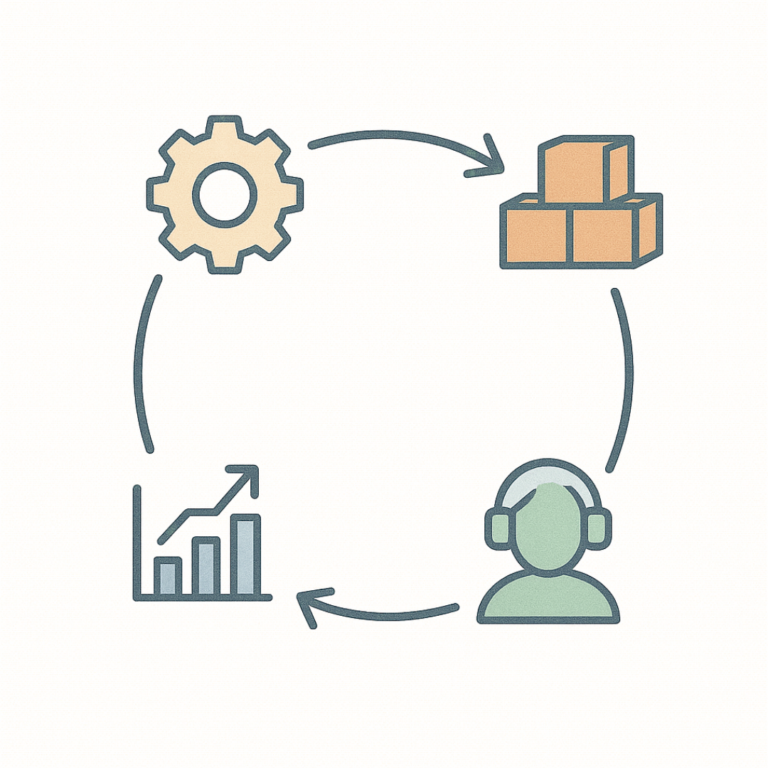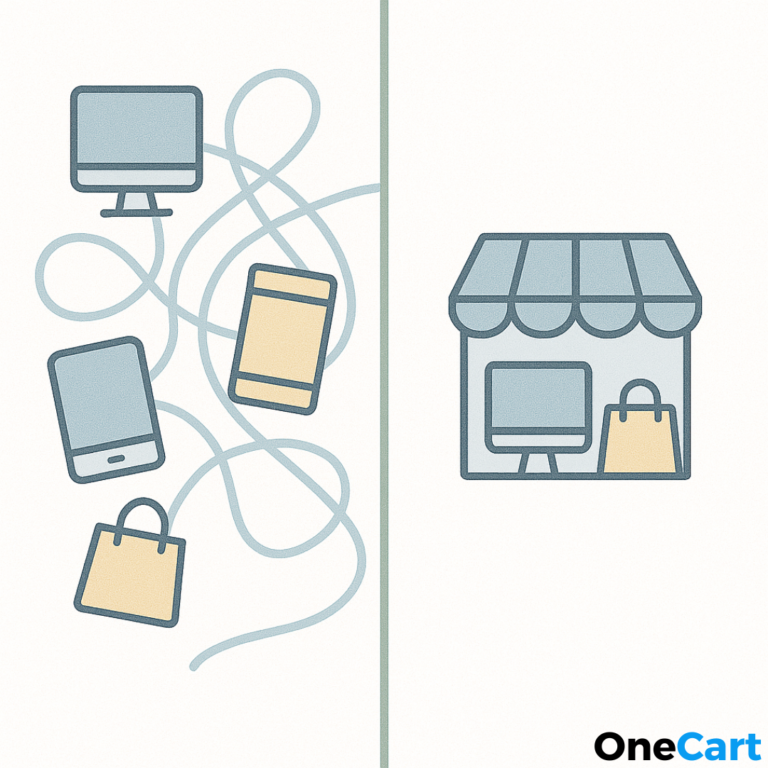This article is by Arvind Kumaraguru, head of marketing at OneCart. Drawing from his experience working with online sellers, Arvind shares practical strategies for navigating the challenges of multichannel eCommerce and making the most of tools that simplify selling across platforms.
The eCommerce landscape has dramatically evolved, reshaping customer expectations and purchasing habits. Customers now expect products to be available across multiple platforms, be it Amazon, Shopify, Temu, or TikTok Shop. This shift in consumer behavior highlights the significance of multichannel selling, a strategy where products are simultaneously sold across multiple online channels. However, successfully managing multiple sales channels isn’t easy. Operational complexity, inventory mismanagement, and inconsistent customer experience can quickly become overwhelming. Solutions like OneCart exist specifically to simplify multichannel operations, making it easier for sellers to thrive.
What is Multichannel Selling?

Multichannel selling refers to the practice of marketing and selling products on various online marketplaces and platforms simultaneously. Unlike omnichannel selling, which integrates all channels into a single customer experience, multichannel selling treats each channel independently to maximize customer reach.
Imagine you’re selling handmade bags. Initially, you might sell them only through Amazon. Soon, you realize you can also reach customers through Temu, Shopee, and your Shopify store. By expanding onto these platforms, you’re engaging multiple customer bases and significantly increasing your market potential.
The benefits of multichannel selling are clear:
Expanded reach and visibility
Diversified sales sources
Increased revenue potential
Enhanced customer convenience and choice
Why Multichannel Selling is Crucial for eCommerce Growth

Consumers today shop online more than ever before, with many using multiple platforms regularly. Recent surveys indicate that businesses selling on three or more channels experience significantly higher customer engagement and sales compared to single-channel businesses.
Additionally, consumer behavior is shifting where shoppers expect seamless access to their favorite products wherever they prefer to shop. Businesses failing to adapt risk losing market share to more agile competitors who meet customers across multiple touchpoints.
Take, for instance, a clothing retailer initially selling exclusively on Shopify. By branching out to Amazon and TikTok Shop, they broaden their audience, attract diverse customers, and mitigate risk from being overly reliant on one channel.
Common Challenges in Multichannel Selling

Inventory Management Issues
One primary challenge in multichannel selling is managing inventory effectively. Stockouts and overselling can significantly damage a brand’s reputation, resulting in lost revenue and unhappy customers.
Order Management Complexity
Managing orders from various sales channels manually is prone to errors and delays. Sellers often face operational inefficiencies as they juggle multiple platforms, risking mismanaged orders and dissatisfied customers.
Pricing Consistency Problems
Sellers may struggle to maintain consistent pricing strategies across multiple platforms. Without strategic price management, sellers risk customer confusion or dissatisfaction due to inconsistent pricing.
Poor Reporting and Visibility
With multiple sales platforms, gathering comprehensive business insights becomes difficult. Without clear visibility into sales performance, sellers find strategic planning challenging.
Best Practices for Successful Multichannel Selling

Centralize Your Inventory Management
Inventory management is at the heart of successful multichannel selling. Utilizing automatic synchronization across channels prevents overselling and stockouts.
Additionally, implementing adequate safety stock ensures you can manage unexpected demand spikes, maintaining smooth customer experiences.
For example, using OneCart’s automatic inventory synchronization tool allows sellers to instantly reflect inventory changes across all platforms, significantly reducing manual errors.
Streamline Your Order Management
Efficient order management across multiple platforms is crucial. Centralized order processing ensures orders are fulfilled swiftly and accurately.
Tools like OneCart help consolidate orders from Amazon, Shopify, Temu and more into a unified workflow. This reduces confusion, speeds up order fulfillment, and increases customer satisfaction.
Leverage Smart Price Segmentation
Different marketplaces attract varied demographics. Leveraging smart pricing strategies tailored to specific platforms can maximize profitability. Implementing segmented pricing strategies ensures that your products are priced competitively, yet profitably, based on each marketplace’s audience and competitive landscape.
Data-Driven Forecasting and Analytics
Data analytics is vital for predicting customer behavior and sales trends. Comprehensive reporting and analytics tools help sellers quickly identify which products perform best on different channels and adjust strategies proactively.
Platforms like OneCart offer detailed insights, allowing sellers to anticipate market trends, manage inventory effectively, and optimize sales strategies to remain competitive.
How OneCart Makes Multichannel Selling Easy

OneCart provides a powerful solution for sellers who wish to thrive in multichannel environments. It centralizes inventory synchronization, streamlines order processing, and generates detailed business analytics across all sales channels.
Here’s how OneCart simplifies multichannel selling:
Real-time inventory sync: Automatically updates stock levels across Amazon, Shopee, Lazada, Shopify, WooCommerce, TikTok Shop, and more, preventing overselling.
Centralized order management: Consolidates orders from different platforms, enabling efficient fulfillment and reduced errors.
Detailed analytics and forecasting: Offers comprehensive insights into sales performance, gross margins, best-selling products, slow-moving stocks, and more. All of this allows sellers to make informed decisions quickly.
Summary and Next Steps
Effective multichannel selling involves careful planning, execution, and the right technology. While the strategy provides tremendous opportunities for growth, it also comes with complexities such as inventory synchronization, order management, pricing strategies, and analytics.
By adopting best practices like centralized inventory management, simplified order processing, segmented pricing, and data-driven forecasting—tools like OneCart (which you can try for free) can help—you can overcome these challenges and position your business for long-term success.